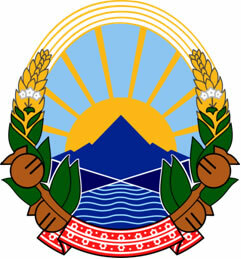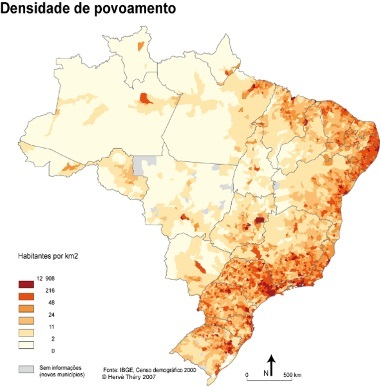Located in the interior of the mountainous Balkan peninsula, Macedonia borders Serbia (the northwest), Bulgaria (to the east), Greece (to the south) and Albania (to the west), its territory has no exit to the sea.
Macedonia is one of the ex-republics of Yugoslavia, whose independence was obtained on September 17, 1991. The independence process took place peacefully, unlike other countries in this region. Bulgaria was the first country to recognize Macedonia as an independent nation. However, Greece was totally against this process because of the use of the name and symbol of the flag used, as Greece has a province called Macedonia.
Greece's opposition resulted in a February 1994 trade blockade of Macedonia. Only with the modification of the flag and the national constitution, in 1995, the two countries normalized relations, returning agricultural exports through the port of Salonica, in the Aegean Sea.
The majority of the national population is followers of Orthodox Christianity. In 1999, during the Kosovo war, approximately 360,000 Albanians (Muslims) fled to Macedonia. In 2001, the tension between Albanians and Macedonians almost triggered a confrontation, however, a peace agreement established a peaceful coexistence between the different ethnic groups.
Do not stop now... There's more after the advertising ;)

Macedonian Coat of Arms
Macedonia data:
Territorial extension: 25,713 km².
Location: Europe.
Capital: Skopje.
Climate: Mediterranean.
Government: Parliamentary Republic.
Administrative division: 85 municipalities.
Languages: Macedonian, Albanian (official).
Religion: Christianity 64.2% (Orthodox 61.4%, others 2.8%), Islam 28.4%, no religion 6%, atheism 1.4%.
Population: 2,042,484 inhabitants. (Men: 1,019,983; Women: 1,022,501).
Composition: Macedonian 67%, Albanian 21%, Turkish 4%, Serbian 2%, other 6%.
Demographic density: 79.4 inhab/km².
Average annual population growth rate: 0.07%.
Population residing in urban areas: 67.39%.
Population residing in rural areas: 32.61%.
Undernourished population: less than 5%.
Life expectancy at birth: 74 years.
Households with access to drinking water: 100%.
Households with access to a health network: 89%.
Human Development Index (HDI): 0.701 (high).
Currency: Macedonian Dinar.
Gross Domestic Product (GDP): 9.5 billion dollars.
GDP per capita: 3,703 dollars.
External relations: World Bank, IMF, WTO, UN.
By Wagner de Cerqueira and Francisco
Graduated in Geography
Brazil School Team
countries - geography - Brazil School
Would you like to reference this text in a school or academic work? Look:
FRANCISCO, Wagner de Cerqueira and. "Macedonia"; Brazil School. Available in: https://brasilescola.uol.com.br/geografia/macedonia.htm. Accessed on June 28, 2021.



